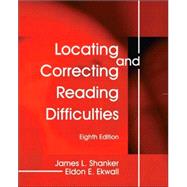
Note: Supplemental materials are not guaranteed with Rental or Used book purchases.
Purchase Benefits
What is included with this book?
PART ONE: INTRODUCTION.
Introduction: Important Principles and Useful Methods for Teaching Students with Reading Difficulties.PART TWO: EMERGENT LITERACY ABILITIES.
1. Phonemic Awareness.PART THREE: DECODING ABILITIES.
3. Basic Sight Words Not Known.PART FOUR: SPECIFIC ORAL READING DIFFICULTIES.
11. Poor Pronunciation.PART FIVE: COMPREHENSION ABILITIES.
21. Word Meaning/Vocabulary Knowledge Inadequate.PART SIX: STUDY SKILLS AND OTHER ABILITIES.
23. Low Rate of Speed.APPENDICES FOR LOCATING READING DIFFICULTIES.
A1: Code for Marking in Oral Diagnosis.APPENDICES FOR CORRECTING READING DIFFICULTIES.
B1: Books for Emergent Readers.The New copy of this book will include any supplemental materials advertised. Please check the title of the book to determine if it should include any access cards, study guides, lab manuals, CDs, etc.
The Used, Rental and eBook copies of this book are not guaranteed to include any supplemental materials. Typically, only the book itself is included. This is true even if the title states it includes any access cards, study guides, lab manuals, CDs, etc.